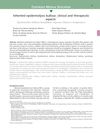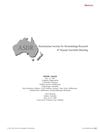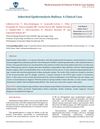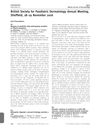A Neonate With Blisters
October 2020
in “
Pediatrics in Review
”
TLDR The newborn was diagnosed with a rare skin disorder causing blisters, which requires careful wound care and family support.
A newborn boy presented with blisters on his feet shortly after birth, leading to a diagnosis of dystrophic epidermolysis bullosa (DEB) through a skin biopsy. DEB is a rare genetic disorder characterized by skin fragility and blistering due to mutations in structural proteins. The boy's genetic testing revealed a heterozygous mutation in COL7A1, associated with dominant DEB. His blisters healed well, and he showed normal growth and development. Treatment for DEB focused on blister prevention and wound care, with ongoing research into targeted therapies like gene therapy and protein replacement. The prognosis varies with disease severity, and family support is crucial.



